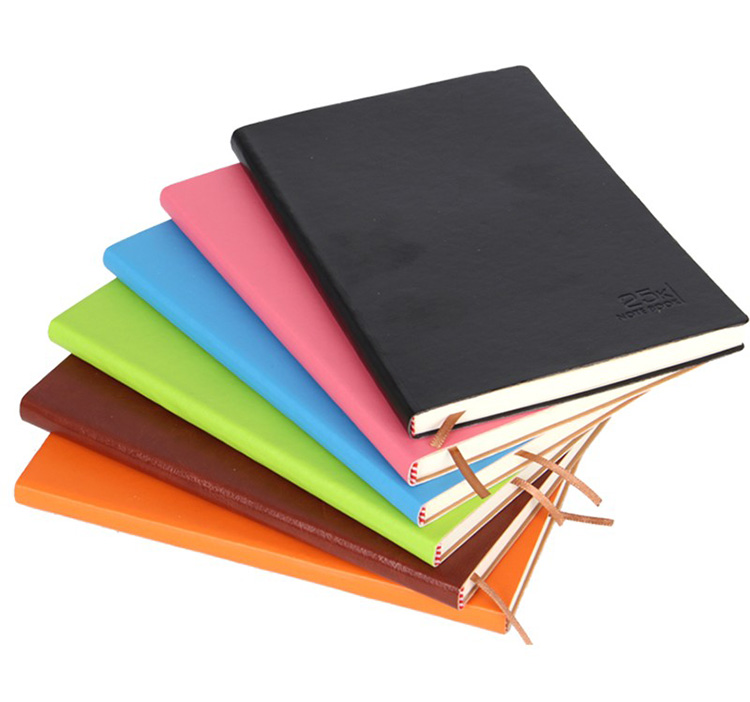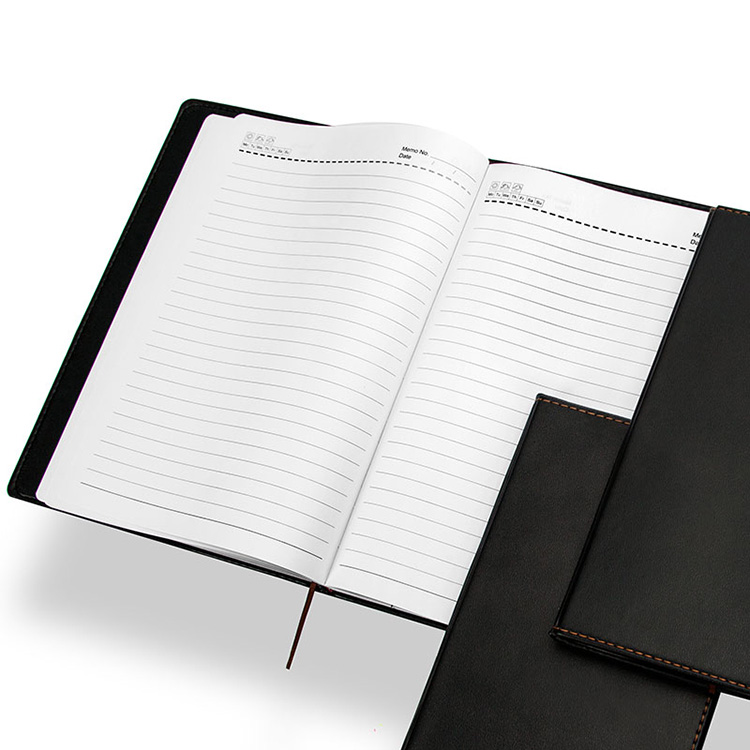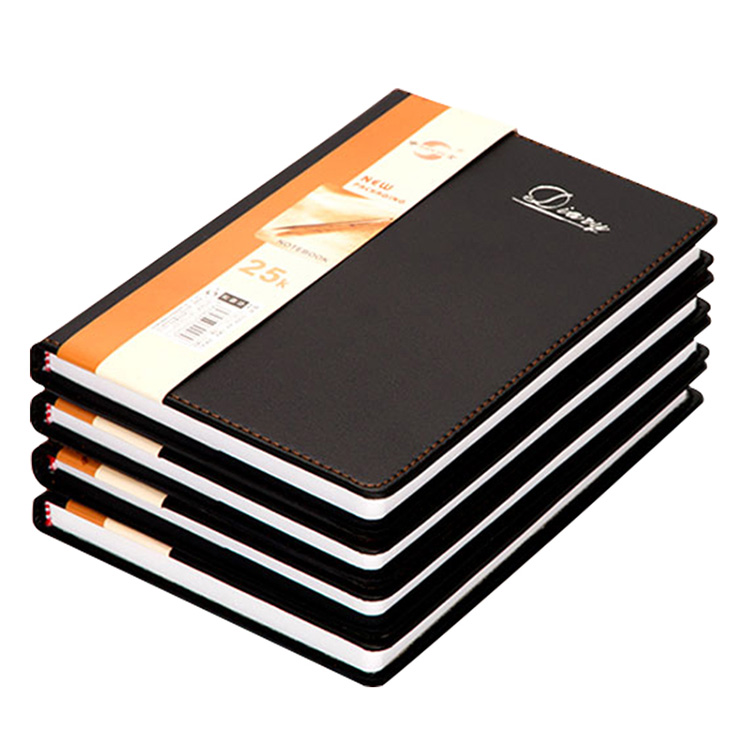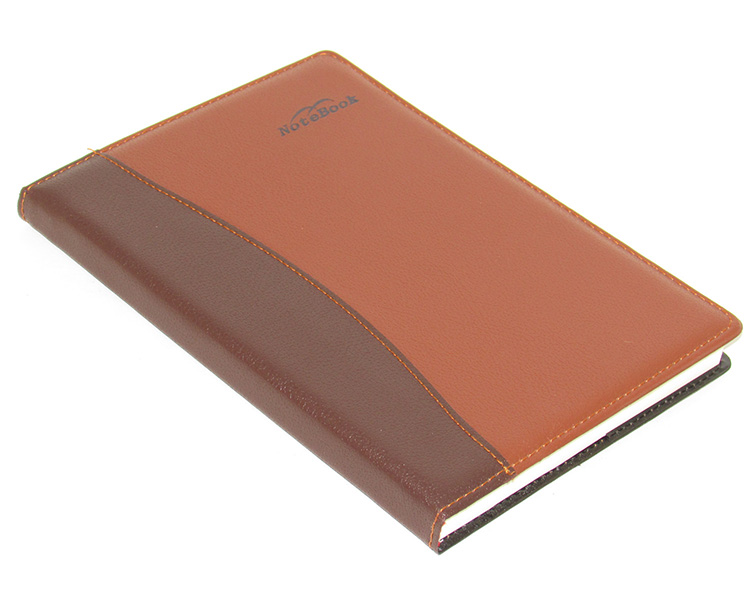A Complete Guide for Custom Leather Notebook Printing
Leather notebooks have a timeless appeal and are favored by many for their durability and elegance. If you're considering getting a custom leather notebook printed, there are several factors you should consider to ensure a high-quality result. In this article, I will guide you through the different aspects of leather notebook printing, including cover material options, inner pages paper stock, notebook size, binding options, post-press finishes, and tips for setting up and designing artwork.
Common cover material options for leather notebooks

When it comes to choosing the cover material for your custom leather notebook, there are several options available. The most common materials used for leather notebook covers are genuine leather, faux leather, and bonded leather.
Genuine leather is a top choice for its premium look and feel. It is made from animal hides and is available in various finishes, such as smooth, textured, or embossed. Faux leather, on the other hand, is a synthetic material that mimics the appearance of real leather. It is a more affordable option and can be a great choice for those who prefer a vegan alternative. Lastly, bonded leather is made by bonding leather fibers together with a polyurethane coating. It offers a similar look to genuine leather but is more cost-effective.
Common inner pages paper stock and weight

The choice of paper stock and weight for the inner pages of your leather notebook is crucial as it affects the overall look, feel, and functionality of the notebook. Uncoated paper is commonly used for its natural and textured finish, which provides a pleasant writing experience. The weight of the paper refers to its thickness and is measured in grams per square meter (gsm).
For a standard leather notebook, a paper weight between 80gsm and 100gsm is commonly used. This weight strikes a balance between thickness and portability. However, if you prefer a more substantial feel, you can opt for a higher gsm, such as 120gsm or even 140gsm. Keep in mind that thicker paper will add bulk to your notebook and may affect its overall flexibility.
Common size of leather notebooks

Leather notebooks come in various sizes, and choosing the right size depends on your personal preferences and usage. The most common sizes for leather notebooks are A5 (148mm x 210mm) and A6 (105mm x 148mm). These sizes strike a balance between portability and writing space. A5 notebooks are widely used for their versatility, while A6 notebooks are more compact and suitable for on-the-go use.
However, if you require a larger notebook for extensive note-taking or sketching, you can consider B5 (176mm x 250mm) or even custom sizes. Keep in mind that larger notebooks may be heavier and less portable.
Common binding options for leather notebooks
The binding option you choose for your leather notebook will determine its flexibility, durability, and overall aesthetic. Two common binding options for leather notebooks are flexible binding and hardcover binding.
Flexible binding, also known as perfect binding, is a popular choice for its flexibility and ability to lay flat when opened. This binding method involves gluing the inner pages to the spine of the leather cover. It allows for easy flipping of pages and provides a seamless writing experience. Flexible binding is ideal for journals, notebooks, and planners.
On the other hand, hardcover binding offers more sturdiness and protection to the inner pages. It involves attaching a hardcover to the spine of the notebook, providing added durability. Hardcover notebooks are commonly used for formal documents, diaries, and keepsakes. They offer a premium look and feel and can withstand rough handling and frequent use.
Common post-press finishes for custom leather notebooks

To add a touch of personalization and sophistication to your custom leather notebook. You can choose from various post-press finishes. These finishes enhance the visual appeal and make your notebook stand out. Some common post-press finishes for custom leather notebooks include embossing, debossing, and foil stamping.
Embossing involves creating a raised design or text on the leather cover by pressing it with a heated die. It adds a three-dimensional effect and a tactile element to your notebook.
Debossing, on the other hand, creates a depressed design or text on the cover, giving it a sunken appearance. Both embossing and debossing can be used to highlight your brand logo, initials, or any other design element.
Foil stamping is another popular finish that involves applying a metallic or colored foil to the leather cover using heat and pressure. It adds a luxurious and eye-catching element to your notebook. Foil stamping can be used to create shiny accents, borders, or even intricate patterns.
How to design and prepare your artwork for printing
When it comes to designing artwork for your custom leather notebook printing, it's essential to consider a few key factors to ensure a seamless and visually appealing result. Here are some tips to guide you:
Keep it simple: Avoid overcrowding the design with too many elements. Opt for a clean and minimalistic approach to maintain the elegance of the leather cover.
Choose the right colors: Select colors that complement the chosen leather material. Earth tones and neutrals often work well with leather for a sophisticated look.
Consider the placement: Take into account the location of the artwork on the cover. Ensure it is centered and properly aligned for a balanced and professional appearance.
Use high-resolution images: If you're including images in your design, make sure they are of high resolution to ensure a sharp and clear print.
Mock-up and test: Before finalizing the artwork, create a mock-up or sample to ensure the design looks as intended on the leather cover. Make any necessary adjustments before proceeding with the final printing.
In conclusion, when it comes to leather notebook printing, understanding the various options and considerations is essential for achieving a high-quality and personalized result. By selecting the right cover material, inner pages paper stock, size, binding option, post-press finishes, and designing the artwork thoughtfully. You can create a custom leather notebook that is not only visually appealing but also functional and durable.
Now that you have a comprehensive understanding of leather notebook printing. It's time to bring your ideas to life and create a custom leather notebook that reflects your style and personality.
Start your leather notebook printing journey today and create a custom leather notebook that truly stands out!
评论
发表评论